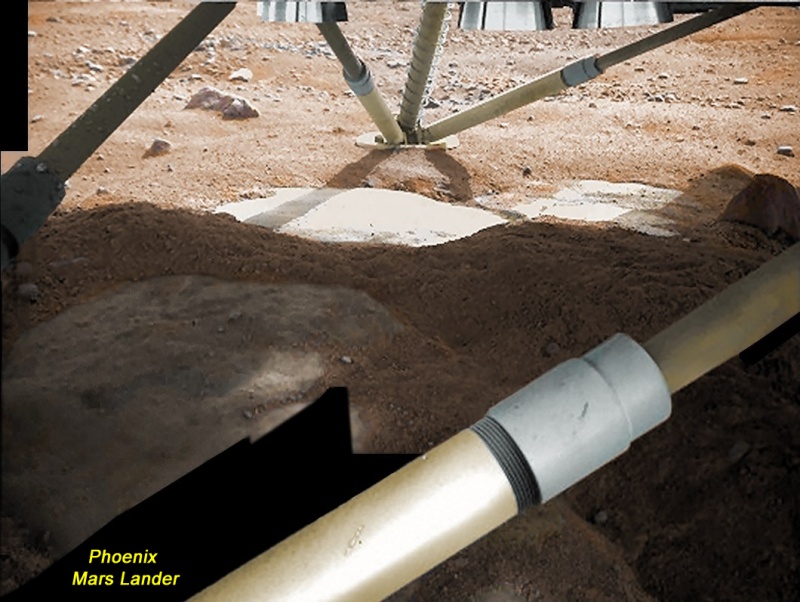Credit & Copyright: Marco Di Lorenzo,
Kenneth Kremer,
Phoenix Mission, NASA, JPL, UA, Max Planck Inst., Spaceflight
Explanation:
The northern Martian summer is waning.
As predicted, a decline in daylight hours, deteriorating weather,
and dust storms are preventing solar arrays on the
Phoenix Mars Lander
from providing power.
Phoenix's last signal was received on
November 2, its successful mission ending after more than five months
in the arctic region of the Red Planet, a run that
exceeded its planned operational lifetime.
Attempting to discover
if Mars' surface
has ever been able to support microbial life, Phoenix performed
an extensive analysis of the soil and returned a
wealth of image data.
Of course, one of the lander's most exciting results was the
detection of water-ice near the Martian
surface.
Recorded
in October, this picture from the lander's Robotic Arm Camera
shows the region under the Phoenix with flat, exposed icy patches.
That area caused researchers to
exclaim "Holy Cow!" when
it was first imaged a few days after the May 25
touchdown of the Phoenix Mars Lander.
Phoenix Mission, NASA, JPL, UA, Max Planck Inst., Spaceflight
1999 2000 2001 2002 2003 2004 2005 2006 2007 2008 2009 2010 2011 2012 2013 2014 2015 2016 2017 2018 2019 2020 2021 2022 2023 2024 2025 |
Январь Февраль Март Апрель Май Июнь Июль Август Сентябрь Октябрь Ноябрь Декабрь |
NASA Web Site Statements, Warnings, and Disclaimers
NASA Official: Jay Norris. Specific rights apply.
A service of: LHEA at NASA / GSFC
& Michigan Tech. U.
|
Публикации с ключевыми словами:
lander - Марс - вода на Марсе - Феникс - поверхность Марса
Публикации со словами: lander - Марс - вода на Марсе - Феникс - поверхность Марса | |
См. также:
Все публикации на ту же тему >> | |
Мнения читателей [2]
